Since the pandemic entered our lives the business uptake in Microsoft Teams has been remarkable. With businesses needing to quickly adjust and adapt to the world of remote working, it has meant that Teams now sits at the top of the pile as a collaboration tool. But where does this leave contact centres?
Firstly, it is a relief that the business world has finally caught up with contact centres, who have had this technology in place for years when you consider that Teams’ core capabilities are instant messaging, voice calls and collaboration, the same offering that many contact centre solutions provide. Now that Teams has become the frontrunner, it means that we can finally focus our attention on making sure that we leverage the best out of Teams within a contact centre environment.
Communication capabilities
If I asked you to consider what you spend most of your time on Teams doing, you would maybe say voice calls. But you would be missing the glaringly obvious functionality, which is instant messaging. When you compare it to Slack, Teams has been built on the principle that communication channels operating in silo like instant messaging are not collaborative. Therefore, by unifying voice communication and instant messaging, it has led to wider business departments now using it as their core platform, which is great for contact centres.
With wider business functions now using Teams, it means they cannot hide. Both in terms of availability and efficiency because a business can now see when you’re online and what you’re doing, which is exactly the same spotlight that the contact centre has had on it for years. Ultimately, this will enable every department to become more productive simply through better workforce management. The accessibility that Teams provides to these departments gives better throughput for contact centre agents who can see when a person is available and online in a single viewpoint.
The one re-occurring challenge that Teams will continue to face is reliability. Contact centres must be reliable in nature, it is a core KPI that will always have an SLA placed upon them. But Teams does not have this pressure point, making contact centres incredibly important from a routing perspective.
The future of work
The pandemic has forced most of us to work from home, so what will happen when we switch back to office working? Well, in speaking to our customers many of them expect to have a hybrid approach to working due to the various benefits like better shift management and access to a wider talent pool. There will be a big push for single sign-on once the pandemic eases as hybrid workers log on each day to multiple systems, meaning contact centres will need to ensure this is brought in immediately.
This does mean that there is still a need for the physical contact centre. For all of Teams’ benefits towards productivity and efficiency, there isn’t a replacement for a physical line manager or supervisor walking the floor at a contact centre to ensure agents are performing. Therefore, the challenge for a contact centre will become the adoption of more sophisticated workforce management tools to replicate this on-floor experience.
In conclusion, the contact centre isn’t going anywhere. If anything, those working within a contact centre environment should expect rapid improvements as the pandemic eases because the core function will remain critical to a business. Businesses need to deliver the best possible customer service, so they must be reliably capable to provide this on every occasion, making the contact centre even more important.




